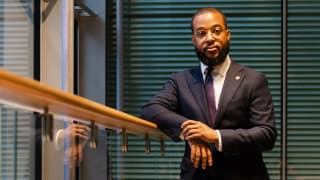Embedding digital transformation into your investment promotion strategy
COVID-19 has accelerated the need for robust digital transformation, and investment promotion agencies around the world have been re-evaluating their strategies to ensure they’re still able to reach their investors – even if they’re still halfway around the world. We reached out to Muhammad Azmi Zulkifli, CEO at Invest Kuala Lumpur, to understand how the digital strategies they’d implemented have continued to adapt and evolve to meet the needs of this new pandemic world.
The government of Malaysia launched an “Industry 4.0 strategy” in 2018 to attract larger multi-national corporations with a digital focus. How does this tie into your wider place brand strategy?
The government’s initiative to adopt Industry 4.0 initiatives was launched in 2018. As an agency under the Ministry of International Trade and Industry, InvestKL’s role is implementing this through a focus on attracting MNCs with a digital & tech focus, especially in the high-tech services sector. With the Industry 4.0 strategy, we expand our focus on new emerging tech sectors such as artificial intelligence, renewable and sustainable energy, IoT and big data, to name a few. Our strategy has always been to attract high tech, high value and high impact investments into Greater KL, but this provided greater focus to our work. Not only that, we also position Greater KL as the location where MNCs can do more innovation and ideation to support Industry 4.0 initiatives.
I know that you’ve been working to integrate multi-nationals to work with your SMEs. How can companies be part of a wider global value chain?
InvestKL created a Business Ecosystem Collaboration (BEC) programme specifically catered to facilitate the collaboration between InvestKL, existing multinational investors, and local companies to achieve a win-win situation for all parties. Through this BEC, we encourage MNCs to incorporate SMEs, enabling them to be part of the global supply chain, especially in promoted sectors. Connecting MNCs to the relevant partners strengthens and enhances the local business ecosystem to make Greater Kuala Lumpur the place to do business in Asia. This also encourages the local SMEs to adopt global best practices, and successful collaborations enable the integration of technology and knowledge transfers between the MNCs and SMEs, allowing the companies to simultaneously move up the value chain.
What’s your tip for building an investment brand in sync with a wider region – or indeed with a nation?
It is important to understand and define the value proposition of the region. We need to identify what there is and what it takes to set the differential factors. The important factors include building a strong local talent pipeline and a solid business ecosystem to attract the investors. Of course, we must be mindful of the ‘access to market’ that MNCs look for. With Malaysia’s diverse talent that is educated, highly skilled, and multilingual, the potential reach is naturally aligned to the needs of a global MNC that operates across wide regions, spanning multiple languages. As a nation, Malaysia is blessed geographically with KL located in the heart of Asia, making it an advantageous and strategic location of choice, boosted by the earlier factors mentioned - such as having a diverse local talent pool and strong business ecosystem.
Can you tell us how you have worked to support your current investors during the pandemic?
While the Government have launched and provided several stimulus packages to support the economy, we have supported many of our investors in more operational matters, working very closely with our Ministries and stakeholders to ensure the investors’ operations continue to run smoothly. Assistance can be in the form of ensuring the investors receive the correct and updated information as well as providing supporting letters to help mitigate employment visa applications.
How do you build a personal approach into your investment attraction work when you’re working virtually?
With this pandemic, digital adoption has increased leaps and bounds. Business unusual is the approach and mindset that the team has adopted as a go-to-market strategy. We continue to maintain our brand presence and build credibility by participating in webinars with our key partners. We maintain our relationships virtually with our potential investors and highlight the country’s strong fundamentals, which is still very much intact even in a world affected by the pandemic. Interestingly, we have also conducted a virtual ‘location site visit’ with a potential investor and they were extremely happy with the outcome. A first for everyone. An essential point is to always remain adaptable to emerging new trends in order to ensure that we are relevant when it comes to promoting Greater Kuala Lumpur as an investment destination.
What would be your top tip for an organisation that was struggling with digital transformation?
In this current global situation, organisations must adopt transformation to keep abreast with the numerous changes and reforms. They must look towards implementing new tools and technologies that facilitate the growth of the organisation and improve work efficiency. On a macro level, re-evaluate the organisation’s business strategy to ensure that it is resilient to digital disruption. Replicate what other companies have been doing successfully in adopting technology and digitalisation and be proactive in seeking government’s existing programmes that support the move to digitalise.
How are you evolving your talent attraction strategy to suit the demands of a post-COVID world? And how are you continuing to build your talent ecosystem?
Talent - especially high skilled talent - is essential for any organisation’s growth and sustainability. InvestKL initiated our InvestKL Talent Programme to nurture world class local talent that are not only multilingual, diverse and highly skilled but highly adaptable to face the ever-changing demands of the workforce in a post-COVID world. We encourage our investors, to work and collaborate with universities, in an Industry-Academia collaboration, thus ensuring a growth pipeline. Industry - Academia collaborations also allow MNCs to provide inputs on curriculum and syllabus in training the right talent to fill jobs. It’s also key that we have a great quality of life; we’re close to nature with rain forests and pristine beaches in easy reach, and we that have a diverse range of cultures in the city. COVID-19 has encouraged many people to rethink their priorities and understand where it is they really want to live, so quality of life has never been more important
What’s next for InvestKL?
Recently, we announced we’ve reached our initial KPI set in 2011 of attracting 100 large MNCs into Greater KL. We anticipate that we will exceed our KPI at the end of 2020.
Looking forward, we have embarked on our next 10-year plan, reaching our next 100 MNCs especially in the high value, high tech, high impact Services sector.
We are also providing strategic inputs to enhance Malaysia’s business ecosystem and value proposition. An example is the collaborative work and engagements with the Human Resource Ministry and Ministry of Higher Education, to tap their talent programmes with the current talent requirements to meet market demand. This encourages the private sector to further engagement in roundtable discussions etc.
Of course, we will continue to reinforce Greater KL’s position as the preferred principal location to grow their business in the region and globally.
Thanks for sharing that with us.
Muhammad Azmi Zulkifli will be speaking at City Nation Place Asia Pacific on the 11th November. Find out more here.
Related reading:
Accelerating FDI through the strategic power of collaboration
Can place branding save the world? | Simon Anholt









